Ariano Irpino is a town in Campania.
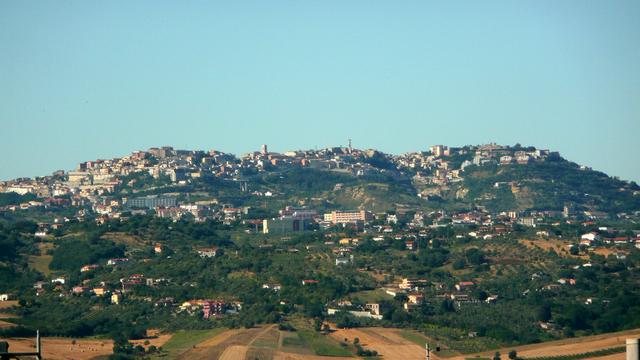
Ariano Irpino lies upon the Irpinian Apennines and is almost centred between the Adriatic Sea and the Tyrrhenian Sea. Its population is roughly 22,200 and its elevation is 788 metres (2,585 ft) above sea level, which brings the town a mild climate in summer and some snow in winter.
It used to be called Ariano or weirdly Ariano di Puglia ("Apulian Ariano"), although it was never part of Apulia. The town is also known as la Città del Tricolle ("the City of the Three Knolls") because it towers on three rounded hills. Ariano Irpino was legally granted the status of città ("city") in 1952.
The official and most widely spoken language in Ariano Irpino is Italian. A variety of Irpinian dialect (similar to Neapolitan) is used too. English is the most commonly spoken foreign language, although the average knowledge of English is far from excellent.
Despite wars and earthquakes the town retains several historic buildings and ancient sights.
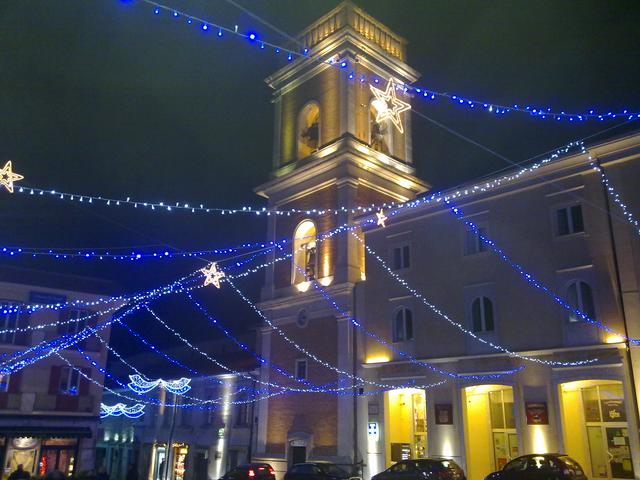
- Cathedral, Piazza Duomo. The Romanesque cathedral preserves a High-Medieval baptismal font, various artistic works and a silver museum, while nearby are the bishop's palace, many other churches, the diocesan museum and the museum dedicated to Giuseppina Arcucci, founder of the Congregation of the Holy Spirit's nuns.
- Norman Castle, Piazza Lusi. Founded by the Lombards, this castle became very important under the Normans, when it was the head of a powerful county; there did King Roger II stay and there he held the Assizes of Ariano and coined the ducat. Later the castle was remodeled by the Aragonese and today houses the museum of Norman civilization. All around the castle there is a wide and panoramic public park.
- Palazzo San Giacomo, Via Tranesi. On a cliff overlooking the Irpinian valleys, it used to be a hospital. Thereabouts were many ancient majolica furnaces, and nowadays the building houses a permanent exhibition of majolica art.
- Palazzo Forte, Via D'Afflitto. Home of the European Center for Norman Studies, and the Archaeological, Civic & Ceramics Museum. The town has a long, ancient history and is still a center of ceramics manufacturing.
- Palazzo Bevere, Via Mancini. It is a majestic building that in 18th century was converted into a high-school complex. Today it hosts a branch of the University of Samnium. In the verdant countryside there are the sanctuary of Our Lady of Valleluogo (who appeared to a shepherdess there, near a mill) and the shrine of Saint Liberatore martyr, both ancient.
Cathedral, Piazza Duomo. The Romanesque cathedral preserves a High-Medieval baptismal font, various artistic works and a silver museum, while nearby are the bishop's palace, many other churches, the diocesan museum and the museum dedicated to Giuseppina Arcucci, founder of the Congregation of the Holy Spirit's nuns.
Norman Castle, Piazza Lusi. Founded by the Lombards, this castle became very important under the Normans, when it was the head of a powerful county; there did King Roger II stay and there he held the Assizes of Ariano and coined the ducat. Later the castle was remodeled by the Aragonese and today houses the museum of Norman civilization. All around the castle there is a wide and panoramic public park.
Palazzo San Giacomo, Via Tranesi. On a cliff overlooking the [[Irpinia]]n valleys, it used to be a hospital. Thereabouts were many ancient majolica furnaces, and nowadays the building houses a permanent exhibition of majolica art.
Palazzo Forte, Via D'Afflitto. Home of the European Center for Norman Studies, and the Archaeological, Civic & Ceramics Museum. The town has a long, ancient history and is still a center of ceramics manufacturing.
Palazzo Bevere, Via Mancini. It is a majestic building that in 18th century was converted into a high-school complex. Today it hosts a branch of the University of Samnium.
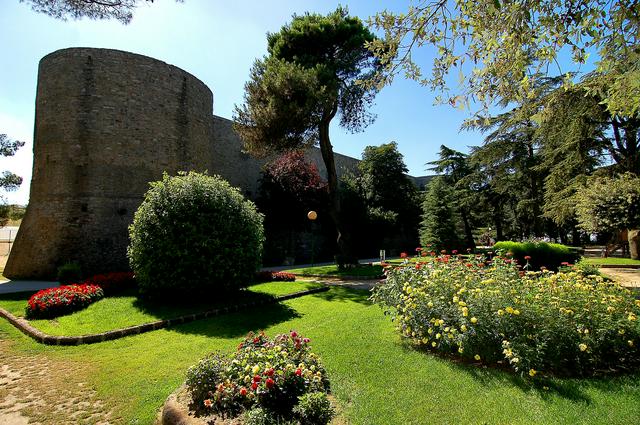
Halfway between the Romanesque Cathedral and the Norman Castle, along via Tribunali street, there is the Communal Cinema-Theatre. Instead the nightclubs are in the suburbs, along the statal road.
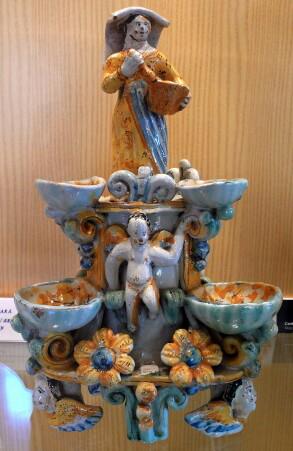
In the historic center there is plenty of small and typical shops, among which the traditional majolica ones stand out. There are important fairs on Palm Sunday, on Sunday in Albis, on June 13th, on July 16th and on November 1st. The weekly market takes place on Wednesday.
Large distribution chains find a place in the outskirts, with two big fairs: on the second Sunday of May in Cardito suburb, and on the first Sunday of August in Martiri suburb.
The thematic fairs, on a variable basis, take place in a modern structure 8 km from the center, along the S.S. 90 Dir (information on Fiere della Campania).
- La Pignata, a high level restaurant near the bus terminal, offers many typical local products.
- San Domenico, another medium-level restaurant, is just in front of the police station.
- Agrodolce Zincone, the most convenient bistro in the historical center, next to the Romanic Cathedral
- Pizzerias, delis, rotisseries and pastry shops are everywhere, whereas agritourism accomodations are numerous in the countryside.
La Pignata, a high level restaurant near the bus terminal, offers many typical local products.
San Domenico, another medium-level restaurant, is just in front of the police station.
Agrodolce Zincone, the most convenient bistro in the historical center, next to the Romanic Cathedral
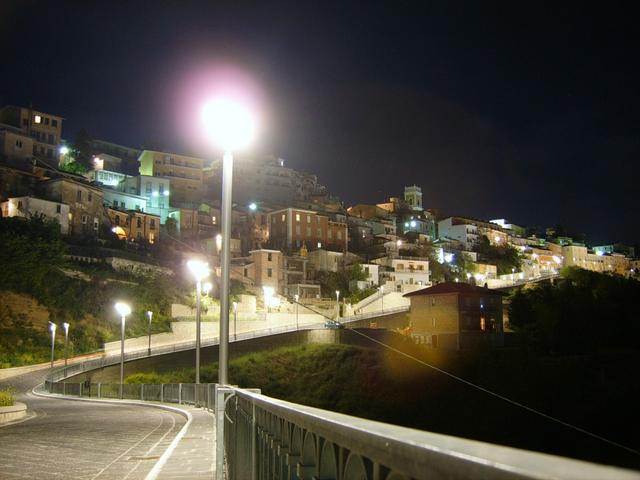 The typical place for nightlife movida is around the bars and cafes on Piazza Pasteni, at the terminal bus, becoming busy after about 22:00. If you want to venture to the outskirts of the city, there are many clubs and discos along the statal road.
The typical place for nightlife movida is around the bars and cafes on Piazza Pasteni, at the terminal bus, becoming busy after about 22:00. If you want to venture to the outskirts of the city, there are many clubs and discos along the statal road.
The town has a free network of public Wi-Fi access, which covers several areas in the historic center with each area being indicated by a special signal.
All around the town there are several medieval villages, each of them with only hundreds or, at most, a few thousand inhabitants. Among them, Zungoli, Savignano Irpino and Greci better retain their ancient shape and the surrounding natural environment.
From Ariano Irpino it is also very easy to reach the provincial capital Avellino (50 km away) and the regional capital Naples (100 km away) by car or public transport.
